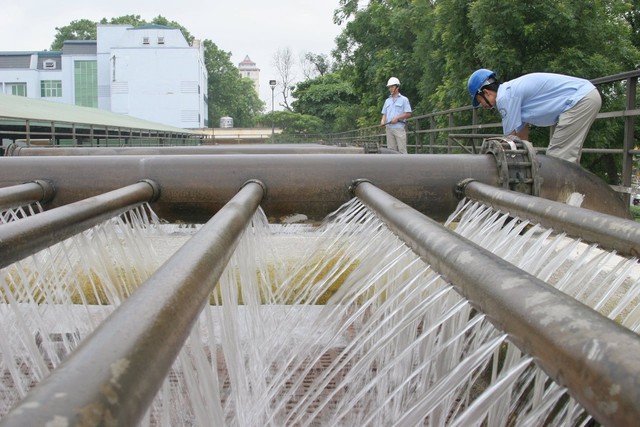Four clean water plants to operate by 2024-2025
VGP - Ha Noi is accelerating efforts to complete four clean water plant projects to provide quality water supply to the public by 2024-2025.

Illustration photo
The four projects are:
(1) The Red River Surface Water Plant (300,000 m³/day), which is expected to be operational by Q4/2024 and will supply water to districts like Bac Tu Liem, Nam Tu Liem, Tay Ho, Hoai Duc, and Dan Phuong.
(2) The second phase of the Da River Surface Water Plant, increasing capacity to 600,000 m³/day by 2024-2025.
(3) The expansion of the Bac Thang Long - Van Tri Water Plant from 150,000 m³/day to 200,000-250,000 m³/day by 2024-2025
(4) The Xuan Mai Water Plant in Hoa Binh with an initial phase capacity of 150,000 m³/day by 2024-2025, serving Ha Dong, Thanh Oai, Ung Hoa, and My Duc districts.
In terms of water supply, the city aims to maintain maximum production and operational capacities of water plants and stations to meet the highest possible demand from residents. Water distribution will be managed to ensure a balance between supply and demand across different areas, prioritizing regions with a single water source to prevent prolonged water outages.
The city plans to ensure stable operation and sufficient pressure for all current customers regarding the water network. New customers within existing network areas will also receive clean water. Detailed water supply plans will be developed for areas downstream of the pipeline to guarantee a continuous and safe water supply. Additionally, water trucks will be arranged in case of water supply disruptions.
The city will also encourage investors to expand water networks in rural areas and Ba Vi District, targeting 124 communes across 12 districts.
By 2024, 54 communes (59,110 households or 236,440 people) will be connected, and by 2025, the remaining 70 communes (58,116 households or 232,465 people) will follow.
Regarding water quality, the city will strengthen the control of source water and treated water quality, with the Water Quality Monitoring Center under the Department of Natural Resources and Environment being responsible for management and oversight./.

